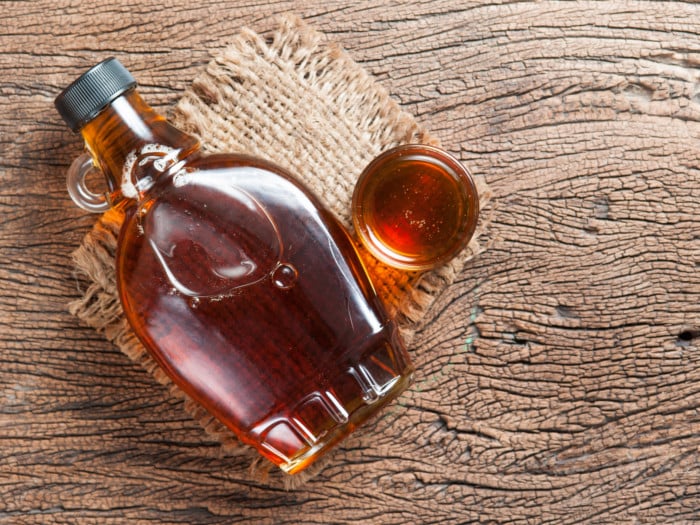With the race for sugar alternatives, we have discovered or rediscovered some interesting flavors. Birch syrup is one such great option that is slowly but steadily gaining ground in the US. Although it is sometimes compared to maple syrup, it has a distinct sweet and savory taste with a unique and interesting flavor profile.
Birch syrup has a rich complex flavor. It has the consistency of maple syrup but is slightly more caramel-like. Its glycemic index is less than 50, which is lower than sugar or maple syrup. The flavor and color of the syrup can change according to the tree from which it is drawn. The color can range from light to golden and dark caramel-like hue. The uses can also depend on the color, richness, and consistency of the syrup.
Birch syrup is derived from birch sap. The sap itself is delicious and is a popular drink in Latvia where it is usually taken at the end of winters to celebrate the arrival of spring. Families tap the birch tree for sap in a tradition that dates back to the 17th century. The sap makes a refreshing drink that is sparkling with just a hint of sweetness. This delicious sap is also made into fermented lemonade or sparkling wine.
The birch syrup is also derived from this sap. The sap is collected and then boiled down to its treacly concentrate. However, the sugar content in the birch sap is quite low, about 0.5 to 2 percent. With a higher water content, birch sap takes quite long to boil down to a sweet syrupy consistency. The long heating can cause fructose and glucose to develop a strong taste which is not always popular.
To remove any such unwelcome results, many modern manufacturers today use evaporation or reverse osmosis technology to remove the water content from the sap without overheating it, keeping the taste intact. Hence, the growing popularity of the syrup is also the result of better production processes. Not only has it made production more efficient, but it has also improved the taste of the syrup.

Maple syrup makes pancakes look cute and fluffier. Photo Credit: Shutterstock
How to Use Birch Syrup?
The flavor of birch syrup is its most unique part. It has been compared to a whole host of other syrups, from maple syrup to honey, sorghum syrup, licorice, and even cola. Some of its uses are:
- To drizzle over pancakes like maple syrup.
- In salad dressing as the sweet element.
- To marinate fish or meat.
- For glazing meat while cooking.
- For sweetening drinks.
- To drizzle over ice cream.
- In cocktails.
When substituting birch syrup in place of other sweeteners, keep in mind that its flavor profile and sweetness can change from one product to another. So, do a taste test to know the quantities you should use.
Birch Syrup Vs Maple Syrup
Birch syrup is often compared with maple syrup because both come from the sap of trees. Indeed, both have a rich flavor. However, there are also many differences. It is considerably more expensive and rarer to find. It also has a sweeter and more complex taste. So, we recommend a taste test before substituting in place of maple syrup.
Where to buy: Many large stores like Walmart now stock birch syrup. You can also order it online directly through merchant sites or e-retail stores like Amazon. Producing the syrup is a complex process. Hence, it is quite expensive. It is among the most expensive sugar substitutes today.
